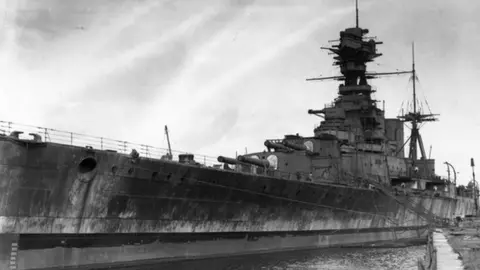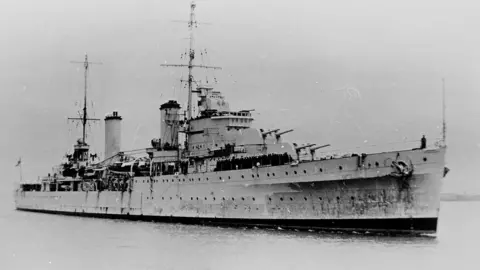Emiliano Sala search: Who is David Mearns?
 Roberto Ricciuti/Getty Images
Roberto Ricciuti/Getty ImagesDavid Mearns has become the face of the private search for the plane which was carrying Argentine footballer Emiliano Sala and pilot David Ibbotson.
The Piper Malibu N264DB, which went missing on 21 January on its way from Nantes, France, to Cardiff, was found in the English Channel on Sunday.
Mr Mearns stepped in to lead a privately-funded search, and located the wreckage within a couple of hours.
But who is the man nicknamed the "shipwreck hunter"?
Record breaker
American-born Mr Mearns has helped solve a number of major maritime mysteries.
The UK-based marine scientist and oceanographer led the successful hunt for HMS Hood and claims to have spearheaded a further 20 historic discoveries.
Using sonar technology and remote-controlled submersibles, the expeditions have also set records by finding wrecks at extreme depths.
 Getty Images
Getty Images
One of Britain's greatest battleships, Hood was sunk by the German navy's Bismarck in May 1941, killing 1,415 men.
HMS Hood's remains were found at a depth of 3,000m in the Denmark Strait, between Greenland and Iceland, in 2001.
He has continued to make significant discoveries around the world with his company, Blue Water Recoveries.
 AFP/AFP/Getty Images
AFP/AFP/Getty ImagesIn 2008 Mr Mearns led the successful search for HMAS Sydney, an Australian navy battlecruiser sunk by the Germans off the continent's west coast in November 1941, killing more than 700.
And in 2015 his company announced they had found a wreck believed to be the Esmerelda, a ship from Vasco Da Gama's fleet thought to have sunk off the coast of Oman in May 1503.
Mr Mearns has also co-ordinated searches for some more modern nautical enigmas.
Defying the odds
In the early 1990s, he assisted a criminal probe into the foundering of the Lucona, a cargo ship blown up in the Indian Ocean in 1997, killing six men, as part of an insurance scam.
He has also been instrumental in searches that have defied the odds.
They include locating the SS Rio Grande, the deepest shipwreck ever found.
The World War Two German supply ship, sunk by the Americans in 1944, was discovered around three and a half miles below the waves of the south Atlantic Ocean in 1996.
